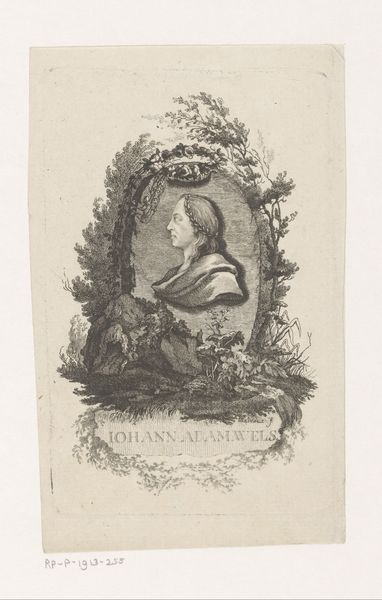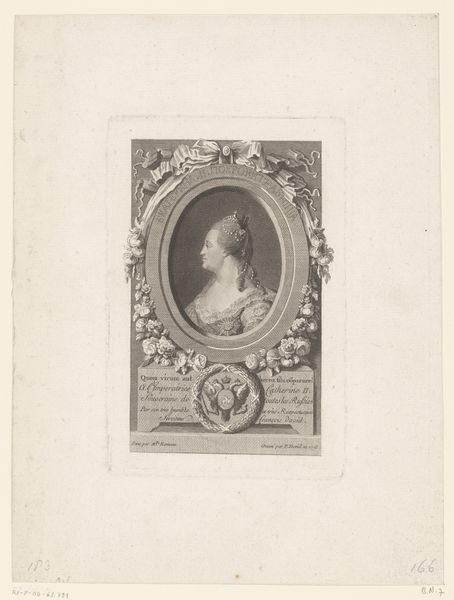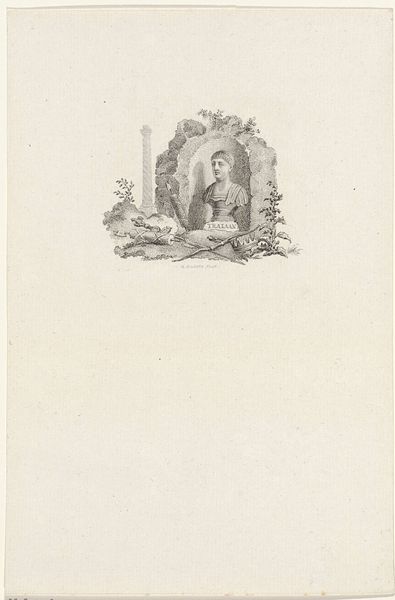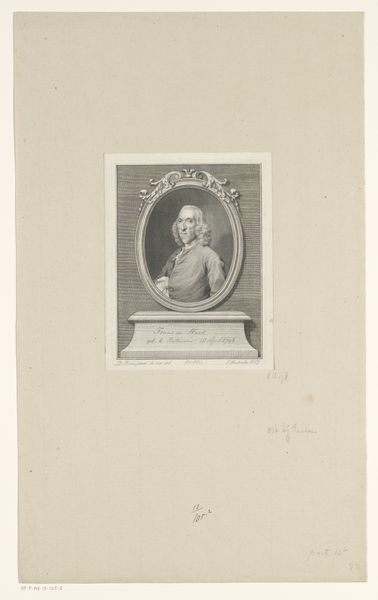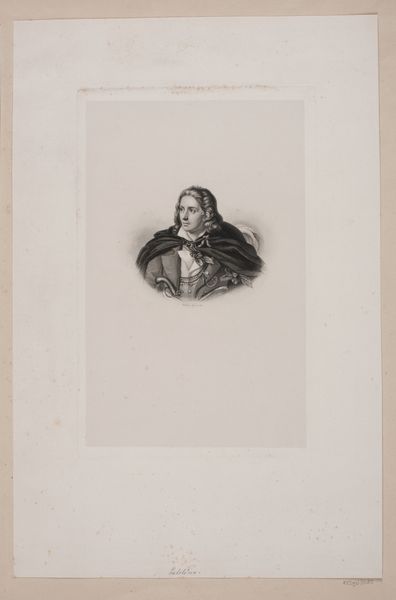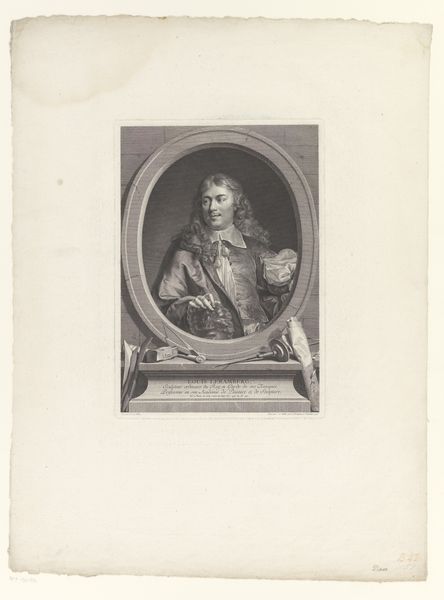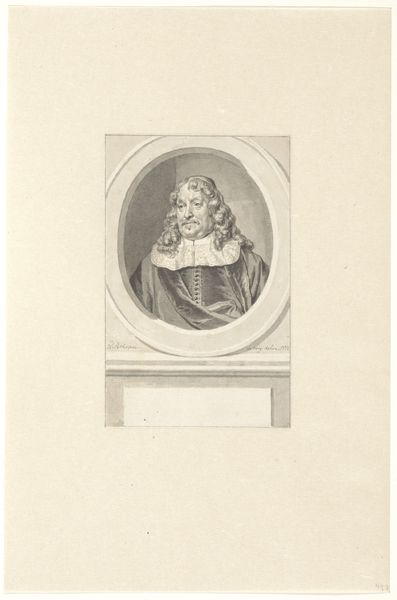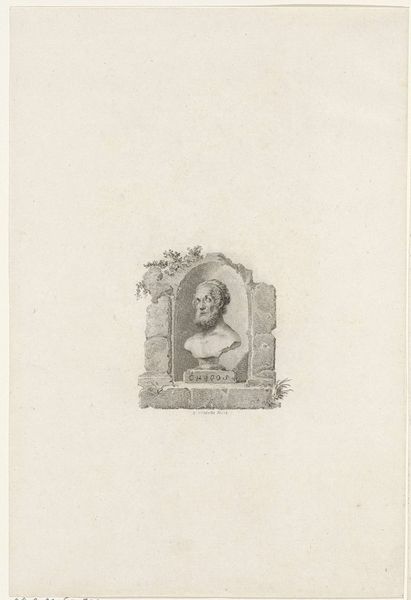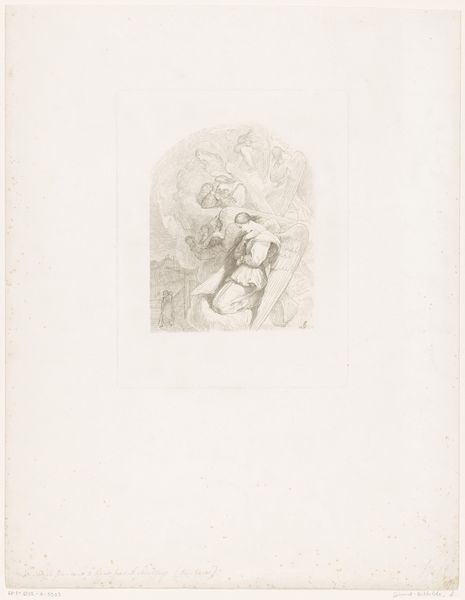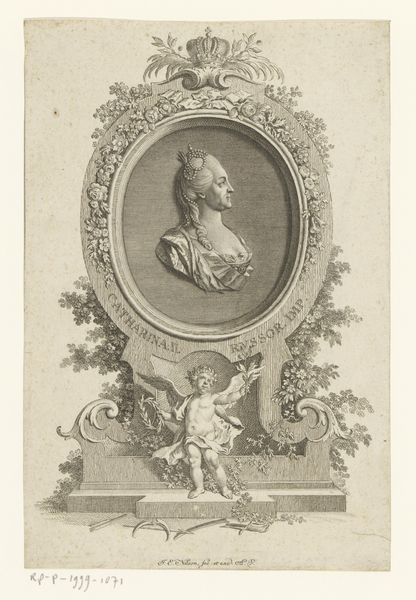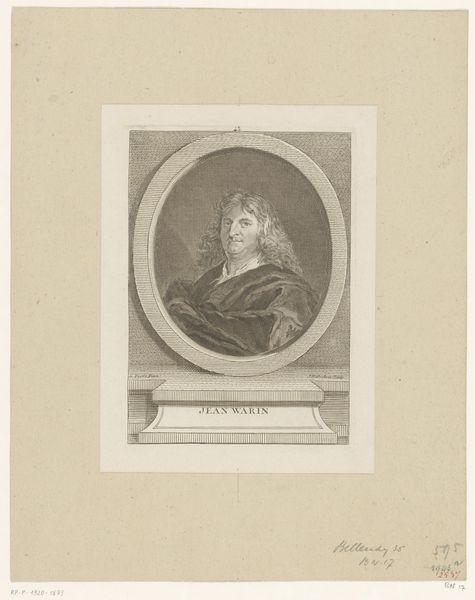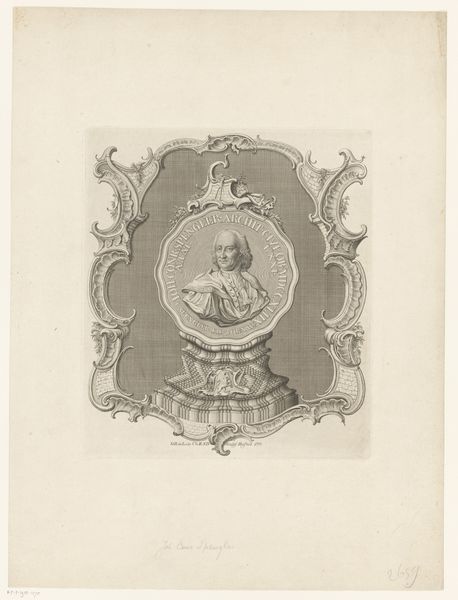
print, engraving
#
portrait
#
neoclacissism
# print
#
old engraving style
#
form
#
line
#
history-painting
#
engraving
Dimensions: height 247 mm, width 165 mm, height 276 mm, width 185 mm
Copyright: Rijks Museum: Open Domain
This bust of Johan de Witt was made by Reinier Vinkeles. It’s an engraving, which means the artist would have used a tool called a burin to carve lines into a metal plate, likely copper. Ink is then pressed into these lines, and the plate is pressed onto paper. The character of an engraving is determined by the artist's hand. The subtlety of shading is made entirely by the density and depth of the lines incised into the plate. The final print has an incredible tonal range, from bright highlights to deep shadows. Engraving was a reproductive medium, ideally suited to disseminating images widely. Prints like this helped to forge a sense of national identity, providing a tangible link to historical figures like Johan de Witt. It allowed for the mass production of images, making art and information more accessible. It is important to remember that what we might consider to be 'fine art' today was deeply intertwined with the mechanics of production and the social context in which it was made.
Comments
No comments
Be the first to comment and join the conversation on the ultimate creative platform.
